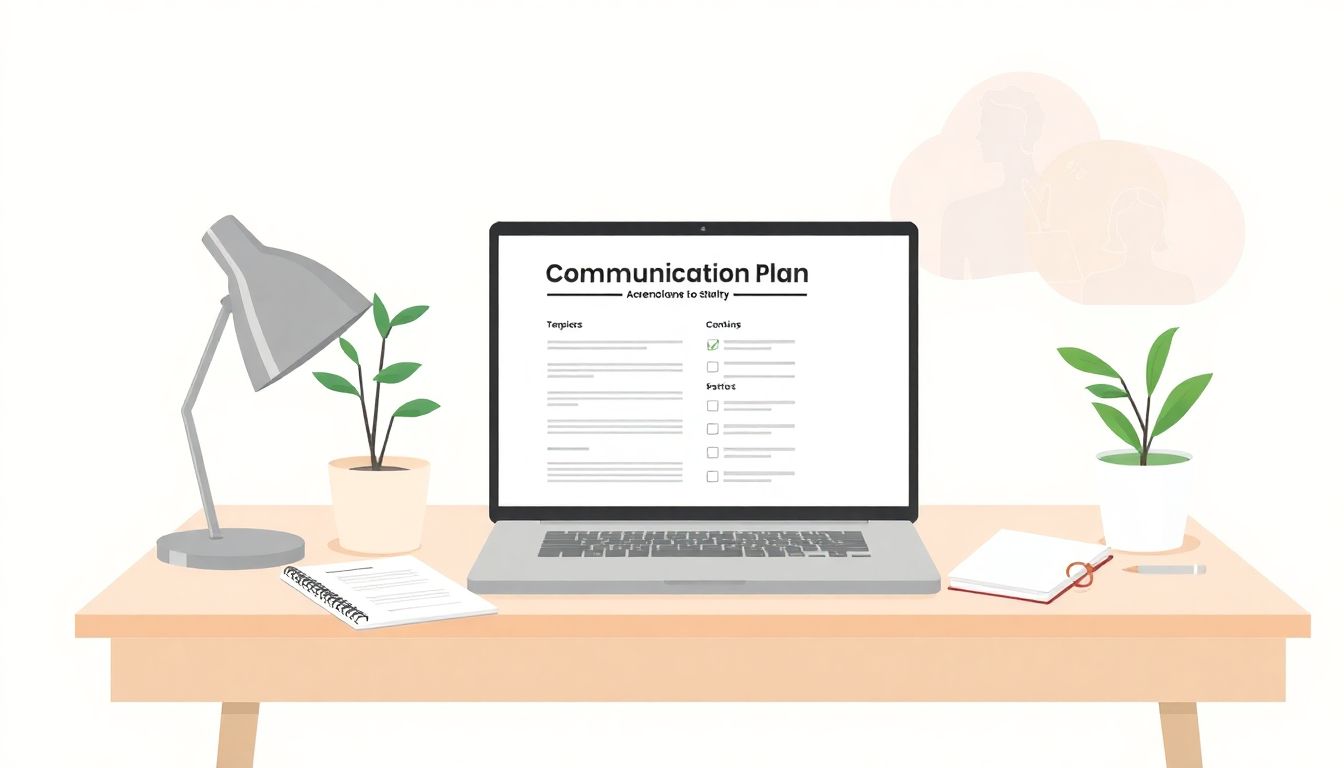Study Guides Prompt Pack
200+ prompts • $27
Corporate restructuring can feel like trying to solve a Rubik’s cube blindfolded—challenging and a bit overwhelming. You’re not alone in feeling the pressure to adapt quickly in today’s fast-paced business landscape. Finding workable solutions amidst change is tricky, and you might be thinking, “How will I navigate this?”
But fret not! If you stick around, you’ll discover how ChatGPT can be your trusty sidekick, helping you streamline the restructuring process, generate fresh ideas, and communicate effectively with your team. It’s like having a brainstorming buddy who’s always available!
We’ll explore how this AI tool can simplify the daunting steps in restructuring, from financial analysis to crafting a solid communication plan. Get ready to unlock the potential of ChatGPT in reshaping your corporate future!
Key Takeaways
- Corporate restructuring is a strategic process that involves changing a company’s operations or finance to better align with market needs.
- ChatGPT can simplify restructuring by providing brainstorming support, generating reports, gathering feedback, and aiding in financial analysis.
- Effective steps in restructuring include assessment, stakeholder engagement, implementation, and monitoring outcomes.
- Utilizing ChatGPT for idea generation, communication plans, and financial analysis can enhance collaboration and efficiency.
- Creating a clear timeline and using project management tools are essential for keeping the restructuring process on track.

A Guide to Corporate Restructuring Using ChatGPT
Corporate restructuring is a strategic move made by organizations to realign their structure, operations, and financial components to better meet market demands and improve business performance. With evolving technologies, using tools like ChatGPT in the restructuring process can streamline efforts and enhance outcomes.
What is Corporate Restructuring?
Corporate restructuring refers to the process of significantly altering the structure or operations of a company.
This can involve various types of restructurings, such as strategic restructuring, operational restructuring, and financial restructuring.
Strategic restructuring often focuses on redefining the overall direction and strategy of a company.
On the other hand, operational restructuring aims to improve internal processes and efficiency, while financial restructuring deals specifically with a company’s financial setup including debt restructuring and capital management.
Other tactics like mergers and acquisitions often fall under the restructuring umbrella as they involve changing the corporate landscape.
It’s essential to differentiate between downsizing and restructuring, as the latter often includes a broader scope of changes aimed at improving the business rather than merely cutting costs.
A successful restructuring initiative can lead to a business turnaround, addressing fundamental challenges while positioning the organization for future success.
How ChatGPT Can Help with Corporate Restructuring
ChatGPT offers a suite of AI-driven solutions that can support various aspects of corporate restructuring.
Its capabilities extend from automation in restructuring documentation to providing decision-making support through data analysis.
Common applications include gathering stakeholder feedback, generating reports, and even simulating scenarios based on different restructuring strategies.
To get started, here are some effective prompts you can use with ChatGPT:
- “Outline potential restructuring strategies for our company based on market trends.”
- “Provide a list of questions for stakeholder feedback regarding our restructuring plans.”
- “Identify challenges we might face during the restructuring process and suggest solutions.”
- “Summarize key trends in our industry that could impact our restructuring strategy.”
By leveraging these capabilities, organizations can improve their communication and operational efficiencies, making the restructuring process more effective.
Key Steps in the Restructuring Process
The restructuring process typically involves a series of key steps that help guide companies through the necessary changes.
First, conducting a thorough assessment and planning phase is essential to identify what areas need improvement.
Next, engaging stakeholders throughout the process fosters trust and transparency.
After planning, the actual implementation involves executing the changes outlined in the strategy.
Monitoring outcomes is crucial to ensure that the restructuring achieves the intended results.
Lastly, establishing risk management strategies and documentation compliance ensures that any unforeseen challenges are appropriately managed.
For effective planning, consider using these prompts in ChatGPT:
- “Create a checklist of tasks for our restructuring plan.”
- “Outline a stakeholder engagement strategy for effective communication.”
- “Suggest methods to monitor the outcomes after implementing restructuring changes.”
Following these steps can help ensure that your restructuring efforts are well-planned and executed, leading to favorable outcomes.
Generating Ideas for Restructuring with ChatGPT
Using ChatGPT as a brainstorming partner can ignite innovation and help generate fresh ideas for restructuring.
Start by organizing brainstorming sessions focused on specific challenges facing your company.
You can also employ idea generation tools for collaborative discussions, leveraging ChatGPT to synthesize input from various stakeholders.
For more structured idea generation, consider incorporating scenario planning to evaluate the implications of different restructuring approaches.
Here are some prompts to guide this process:
- “Generate a list of innovative restructuring ideas tailored for our industry.”
- “Draft a scenario analysis for potential restructuring options.”
- “What are some best practices for enhancing creativity during a brainstorming session?”
- “Provide a comparison of successful restructuring strategies used by leading companies.”
By tapping into the synthetic thinking capabilities of ChatGPT, organizations can kickstart productive discussions and explore innovative approaches to restructuring.

Creating Communication Plans with ChatGPT
Effective communication is crucial during corporate restructuring as it helps manage expectations and foster transparency.
ChatGPT can assist in developing comprehensive communication plans that keep all stakeholders informed and engaged.
Start by identifying key audiences, such as employees, investors, and clients, then tailor your messaging to meet each group’s needs.
Using ChatGPT, generate message templates to ensure consistency in communications; these templates can address specific concerns related to the restructuring.
Here are some practical prompts to facilitate this process:
- “Draft a communication plan outline for our restructuring strategy.”
- “Create a message for employees explaining the rationale behind our restructuring.”
- “Generate FAQs for stakeholders to address common concerns during the restructuring process.”
- “List key messaging points for external communication about our restructuring.”
In addition to creating messages, ChatGPT can help develop feedback mechanisms, ensuring that communication remains a two-way street.
By using AI to craft communication strategies, organizations can enhance trust and engagement among their teams and stakeholders.
Using ChatGPT for Financial Analysis During Restructuring
Financial analysis is a cornerstone of any restructuring process, as it allows organizations to understand their current position and make informed decisions.
ChatGPT can assist in various aspects of financial analysis, from modeling profitability to forecasting future performance.
Begin with cash flow analysis to identify potential shortfalls; ChatGPT can help generate detailed cash flow reports and analyze historical data.
To assess profitability, consider this prompt: “Provide a profitability analysis template focusing on different business units.”
Incorporating ChatGPT into your financial analysis can also streamline budgeting by generating preliminary budget drafts or suggesting cost-cutting measures.
Here are some useful prompts for gathering insights into your financial processes:
- “Create a financial model for evaluating potential restructuring outcomes.”
- “Generate a cost-benefit analysis for our proposed restructuring options.”
- “Outline a framework for budgeting during the restructuring process.”
- “Analyze potential risks based on current financial data.”
Utilizing ChatGPT can provide invaluable data-driven insights, making your financial analysis more robust and actionable as you navigate through restructuring.
Developing a Timeline for Restructuring Using ChatGPT
Creating a clear timeline for restructuring is vital for keeping the project on track and ensuring accountability.
ChatGPT can help you outline project milestones and deadlines, turning general objectives into actionable tasks.
Start by identifying critical phases of your restructuring, such as assessments, strategy development, implementation, and review.
Incorporate project management tools and templates to visualize your timeline, such as Gantt charts, which help clarify task dependencies.
Consider using these prompts to create a comprehensive restructuring timeline:
- “Draft a Gantt chart for our restructuring project, including key milestones.”
- “List deadlines for each phase of the restructuring process.”
- “Outline a project management framework for monitoring progress.”
- “Generate a checklist of tasks for each phase of the restructuring.”
Regularly updating your timeline and tracking progress with ChatGPT’s assistance keeps everyone aligned and aware of deadlines, paving the way for a smoother restructuring process.

Best Practices for Leveraging ChatGPT in Corporate Restructuring
To effectively use ChatGPT in corporate restructuring, focus on integrating AI in ways that enhance your existing processes.
Start by defining clear goals for what you want ChatGPT to assist with, whether it’s generating reports, facilitating communication, or providing data insights.
Training your team on how to interact with ChatGPT is crucial for maximizing its potential.
Encourage staff to experiment with different prompts to discover how best to leverage the tool for their specific needs.
Ensure that the data you provide to ChatGPT is accurate and up-to-date; the quality of output relies heavily on the input it receives.
Utilize iterative feedback cycles, where the responses from ChatGPT are continually assessed for relevance and quality, guiding future interactions.
Remember to uphold ethical considerations by being transparent about AI usage and addressing any privacy concerns.
Here are some practical prompts you can use for best practices:
- “List best practices for integrating AI into our restructuring process.”
- “Provide tips for training staff on how to use ChatGPT effectively.”
- “Outline ethical considerations we should keep in mind while using AI in restructuring.”
- “What iterative feedback processes can improve our use of ChatGPT?”
Adopting these practices can help leverage ChatGPT to its full potential, turning it into a valuable ally during your restructuring efforts.
Common Challenges in Restructuring and How ChatGPT Can Address Them
Restructuring often comes with a host of challenges, from employee resistance to financial constraints.
One common issue is resistance to change, which ChatGPT can mitigate by facilitating open dialogue through insights and messaging strategies.
Leadership challenges can also arise, particularly in the need for clear communication; using ChatGPT to craft transparent messages can help keep everyone aligned.
Communication barriers may create misalignment of goals; ChatGPT can generate content tailored to different stakeholders to ensure everyone is on the same page.
Financial constraints can limit options, but ChatGPT can aid in thorough financial analysis and cost-benefit recommendations, helping you make informed decisions.
Managing stakeholder expectations is crucial; ChatGPT can draft responses to common concerns, making it easier to address questions proactively.
Lastly, conflict resolution can be simplified as ChatGPT generates suggestions for negotiation strategies and compromises that cater to various interests.
Here are some prompts to tackle challenges effectively:
- “List common challenges faced during corporate restructuring and how to overcome them.”
- “Provide a strategy for communicating changes to resistant employees.”
- “Draft a financial analysis framework for evaluating available resources.”
- “Generate a stakeholder management plan to align goals during restructuring.”
By utilizing ChatGPT to address these challenges, organizations can navigate the restructuring process more smoothly and effectively.
Real-Life Examples of ChatGPT in Corporate Restructuring
Real-life applications of ChatGPT in corporate restructuring showcase its effectiveness across various industries.
For instance, a tech startup used ChatGPT to streamline its communication strategy during a significant restructuring, resulting in improved employee engagement.
In the retail industry, a company leveraged ChatGPT to analyze customer feedback collected during a merger, helping to align product offerings with consumer preferences.
Another example can be found in manufacturing, where ChatGPT assisted in developing financial models to assess the impact of operational changes, leading to cost savings.
These case studies provide insights into how organizations successfully integrate AI into their restructuring efforts.
Here are some prompts to explore further examples:
- “Share case studies of companies that successfully used ChatGPT during restructuring.”
- “What specific metrics did businesses achieve by using AI in their restructuring?”
- “Provide testimonials from organizations regarding their experiences with ChatGPT.”
- “Describe industry-specific strategies for using ChatGPT during corporate restructuring.”
These examples highlight the myriad of ways ChatGPT can be a strategic asset during restructuring, suggesting that its potential is still to be fully realized across industries.
Conclusion: The Future of Corporate Restructuring with AI
The future of corporate restructuring is poised for transformation as AI technologies like ChatGPT continue to evolve.
These advancements promise improved efficiencies and decision-making capabilities in rebuilding corporate strategies.
As organizations embrace digital transformation, incorporating AI insights will become standard practice for driving innovation during restructuring efforts.
The impact of AI on corporate governance is also significant, driving changes in how decisions are made and strategies implemented.
Looking ahead, companies that adapt to these technological shifts will not only survive but thrive in increasingly competitive landscapes.
Here are some forward-thinking prompts related to the future of AI in corporate restructuring:
- “What are emerging AI trends that will influence corporate restructuring?”
- “Predict the long-term impacts of AI on business strategies in the coming years.”
- “How will AI reshape the future of corporate governance?”
- “What strategies should businesses adopt to stay ahead in AI-driven restructuring?”
Embracing AI is not just an option anymore; it is a necessity for organizations looking to navigate their restructuring journeys effectively in the years to come.
FAQs
ChatGPT can streamline communication, generate innovative restructuring ideas, assist in financial analysis, and aid in developing effective timelines. Its AI capabilities help enhance decision-making efficiency and adaptability during the restructuring process.
ChatGPT can help draft clear and concise communication materials tailored for stakeholders, ensuring transparency throughout the restructuring process. It can suggest key messages, tone, and communication channels based on audience analysis.
ChatGPT can assist in analyzing financial data, generating projections, and identifying cost-saving opportunities. It can quickly summarize complex data, making it easier for decision-makers to understand financial implications during restructuring.
Common challenges include resistance to change, communication gaps, and financial uncertainty. ChatGPT can address these by providing data-driven insights, facilitating open dialogue, and proposing solutions that align with organizational goals.
Last updated: March 20, 2025
